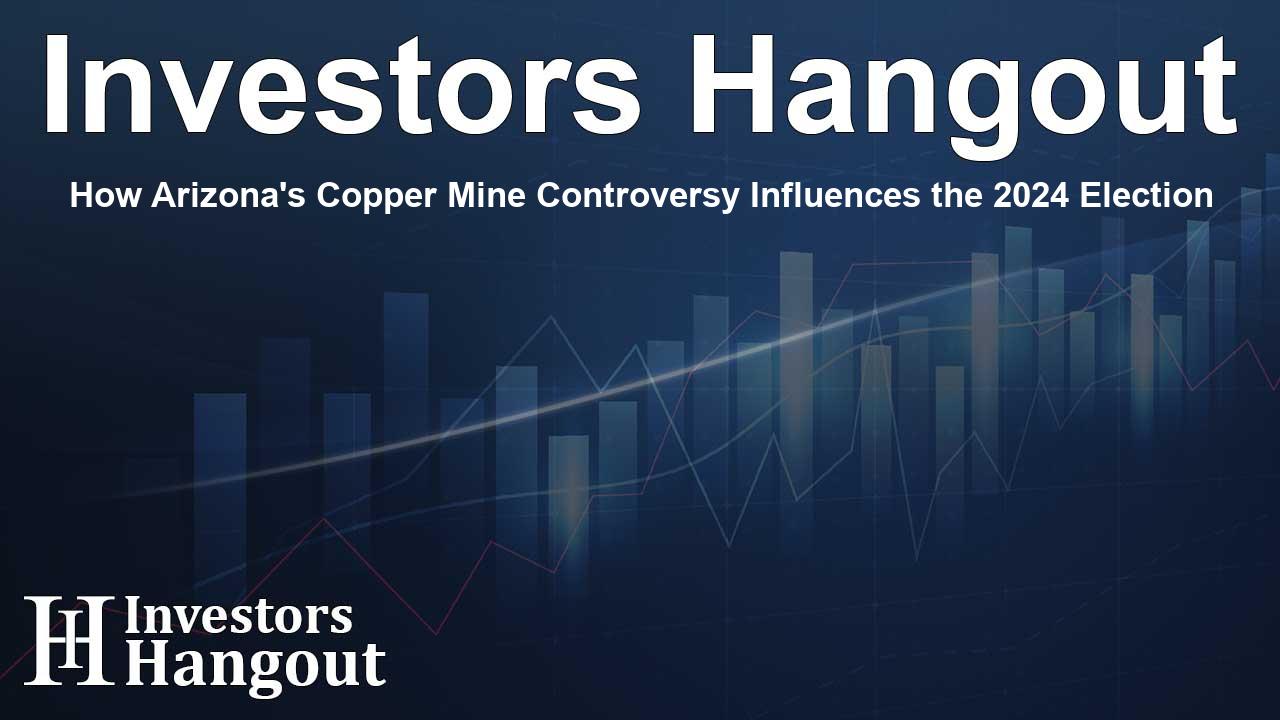How Arizona's Copper Mine Controversy Influences the 2024 Election

The Significance of the Resolution Copper Mine in Arizona
The ongoing controversy surrounding the Resolution Copper mine in Arizona is not just an environmental issue; it has the potential to sway the upcoming 2024 U.S. presidential election. This battle involves complex dynamics, including Native American rights, environmental concerns, and the economic implications of mining critical minerals.
Opposition from Native American Tribes
Native American communities have voiced significant opposition to the mine, primarily due to its location, which is sacred to the San Carlos Apache tribe. This mine, if constructed, stands to supply a substantial portion of the copper required for the United States. However, it would disrupt a site that holds immense cultural and spiritual value, creating friction between the federal government, mining companies, and Indigenous tribes.
Understanding the Importance of Copper
Copper is a vital component in the transition to renewable energy. The U.S. depends heavily on imports for this essential metal, sourcing almost half of its copper needs from outside the country. As domestic production declines, the urgency for projects like the Resolution mine becomes apparent, yet this necessity raises ethical questions concerning the land and the people who inhabit it.
Legal and Political Landscape
Recent legal actions taken by various Native American tribes play a crucial role in this narrative. An appeal to the U.S. Supreme Court seeks to halt the operation, which has stirred questions about the biblical ramifications of mining in sacred land. This case has the potential to reshape how mining projects are assessed in terms of tribal rights and environmental sustainability.
Native American Votes in the 2024 Election
The upcoming election has intensified the focus on Native American voting power in Arizona. With a population nearing 400,000, their influence can’t be overlooked. Tribes traditionally leaning towards the Democratic party may shift perspectives based on their engagement with complex issues like the Resolution mine.
The Candidates' Stances
As the election heats up, Kamala Harris and Donald Trump have shown contrasting approaches to mining operations. Harris previously indicated a commitment to protecting Native American interests while in office, prompting speculation on her stance towards the mine's development. In contrast, Trump has historically supported mining initiatives, claiming that he would expedite such projects if re-elected, which may attract some voters in favor of economic development.
The Broader Implications
The implications of the Resolution Copper mine extend beyond copper supply and environmental considerations; they touch upon national security interests, economic stability, and climate change strategies. The dilemma illustrates a balancing act between the need for critical minerals and the sacredness of land long inhabited by Indigenous communities.
Community Perspectives
Local leaders, such as the mayor of Superior, Arizona, have actively advocated for the mine as a means to alleviate high unemployment rates—currently at 45%—while ensuring the community's future economic viability. These hopes are entwined with a larger narrative about the need for sustainable jobs in areas hit hard by economic downturns.
Conclusion
Ultimately, the Resolution Copper mine’s fate will likely be determined by the next presidential administration, representing a pivotal intersection of culture, politics, and environmental stewardship. As the election approaches, voter sentiment around this issue will be telling; the San Carlos Apache and other tribes are more than just stakeholders—they are potential game changers in a closely contested election.
Frequently Asked Questions
What is the Resolution Copper mine?
The Resolution Copper mine is a proposed site in Arizona intended to supply a significant portion of the copper needed for the United States, particularly amidst a rising demand for renewable energy components.
Why are Native American tribes opposing the mine?
Tribes oppose the mine due to its location on sacred land, which is critical to their cultural and spiritual practices. Many tribes view the potential destruction of this area as an infringement on their rights.
How does the mine affect the political landscape in Arizona?
The mine has become a political issue, with candidates needing to address the concerns of Native American voters who may swing the election. Their involvement could be decisive in the outcome of the upcoming presidential race.
What are the environmental concerns related to the mine?
Environmental concerns revolve around the potential destruction of sacred land and the ecological impact of copper mining, raising questions about sustainability and the balance between economic development and environmental protection.
What are the candidates' views on mining and Native American rights?
Candidates like Kamala Harris have expressed support for Indigenous rights, while Donald Trump has generally endorsed mining projects. Their contrasting stances could influence voter perceptions in Arizona.
About Investors Hangout
Investors Hangout is a leading online stock forum for financial discussion and learning, offering a wide range of free tools and resources. It draws in traders of all levels, who exchange market knowledge, investigate trading tactics, and keep an eye on industry developments in real time. Featuring financial articles, stock message boards, quotes, charts, company profiles, and live news updates. Through cooperative learning and a wealth of informational resources, it helps users from novices creating their first portfolios to experts honing their techniques. Join Investors Hangout today: https://investorshangout.com/
Disclaimer: The content of this article is solely for general informational purposes only; it does not represent legal, financial, or investment advice. Investors Hangout does not offer financial advice; the author is not a licensed financial advisor. Consult a qualified advisor before making any financial or investment decisions based on this article. The author's interpretation of publicly available data shapes the opinions presented here; as a result, they should not be taken as advice to purchase, sell, or hold any securities mentioned or any other investments. The author does not guarantee the accuracy, completeness, or timeliness of any material, providing it "as is." Information and market conditions may change; past performance is not indicative of future outcomes. If any of the material offered here is inaccurate, please contact us for corrections.